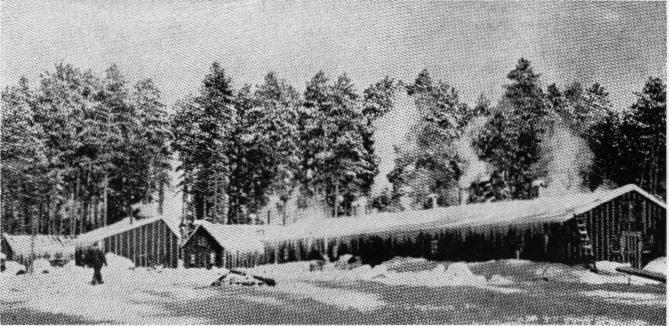national Falls in 1907. Even so, when the first Finns arrived, about 1910, the town still consisted of nothing more than a single `street', edged with sidewalks made of planks.
The seasonal nature of lumbering operations made the position of unskilled Finns difficult at first, but the paper mill started in 1909 changed the picture: Finns went to work in the factory, where their pay at first was $1.75 per day, and their life began to be more stable. Thus the Finns have been associated with the growth of this, perhaps the world's largest, paper mill and with the subsequent growth of International Falls. Ilmonen reported "a considerable number" of Finns there in the 1920s, and in interviews made by the Minnesota Finnish-American Historical Society in 1954 with Finns still living there it was concluded that 59 Finnish families had at one time lived there, making a total, when their children are counted, of somewhat more than 200

Minnesota Lumber Camp.
Finns. At the time of the interviews, there were still 36 families present, with only one or two members left in each. The official 1950 Census confirms these figures, for they indicate 59 Finns living in the community. At this period the paper mill, known as the Minnesota and Ontario Paper Company, employed more than 1800 persons; during the 1930s, it even had a branch in Finland, the Karhula Company.
In International Falls the Finns had a local Socialist party organization, established in 1911 (with at least 44 members in 1912) and remaining alive until 1932. Almost from the beginning, they had their own hall, which housed an active amateur theatrical group.
203